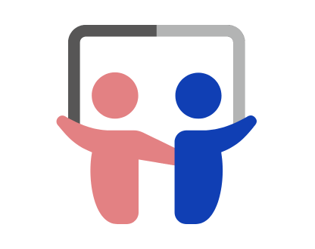How to create psychological safety
Use these conversation prompts and build higher-performing teams.

What makes a team great?
Research shows it’s less to do with who is on the team, and much more about how the team members interact, structure their work and view their contributions.
Dynamics such as dependability, the structure and clarity of goals and roles, and doing meaningful work that matters – all help make a successful team.
But one dynamic underpins all these others – psychological safety.
Teams and individuals perform better when they feel safe to take risks and be vulnerable in front of each other. However, people are reluctant to engage in behaviours that could negatively influence how others at work perceive them. Self-protection is a natural strategy in the workplace, but it’s not conducive to great teamwork. Research shows people who feel safe are less likely to leave, more likely to be open to diverse ideas, bring in more revenue and are more productive overall.
So how do we build a higher-performing team?
Here are 8 proven conversation techniques for managers to inspire psychological safety in their workplace:

Share lived experiences
Get to know people as people.
In a 1:1 situation, ask, “How is work going for you?” Follow up with “What support would be most helpful for you right now?”
Listen actively without making assumptions or centring yourself in the conversation. Make it clear that you care about their answers and enact changes if feasible.
-1.png?width=315&height=250&name=Untitled%20design%20(1)-1.png)
Demonstrate empathy
In a 1:1 situation, share your struggles and how you manage your wellbeing.
Ask open-ended questions to encourage sharing, like “How are you feeling?” or “What’s been on your mind lately?”
Say, “Thank you for sharing with me,” and refrain from toxic positivity by avoiding dismissive phrases like “I understand” or “Don’t worry, it will be OK.”
.png?width=315&height=250&name=Untitled%20design%20(3).png)
Model vulnerability
In a 1:1 or team situation, get comfortable letting go of perfectionism and needing to ‘be right’ versus being the learner and ‘getting it right’.
Ask people for input and support by saying, “I need your help”, “I’m not sure”, “I don’t have the answer”, or “I’m sorry”.
By dispelling the notion that leaders are superhuman and never feel fear or pressure, you avoid creating unrealistic expectations for your team.
.png?width=315&height=250&name=Untitled%20design%20(4).png)
Frame work as a learning problem
Framing it as an execution problem means it falls on the person who didn’t manage and becomes a personal failure.
Ask, “Do you need any training or new skills to do this work/solve this problem?”
Framing the work as a learning problem acknowledges that sometimes problems exist because there are certain competencies that can be learned to solve them.
.png?width=315&height=250&name=Untitled%20design%20(5).png)
Check understanding
Be willing to admit if you have made a mistake or perhaps failed to understand another perspective.
Ask, “Have I explained that clearly?” or “Does that make sense to you?” or “How can I explain that better?”
Making mistakes is a part of learning, and seeking feedback helps you keep growing and improving at what you do. It's also a way of modelling vulnerability.
-1.png?width=315&height=250&name=Untitled%20design%20(6)-1.png)
Choose words carefully
Choosing positive language improves mindset and performance.
Try simple word changes like “Yes, and...” instead of “No, but...” or ‘opportunity’ instead of ‘challenge’ or add positive phrases like “You’ve got this!”
The right words help people employ a positive mindset and speak up without fear.
-1.png?width=315&height=250&name=Untitled%20design%20(7)-1.png)
Use curiosity
As a leader, if you model that no question is too insignificant to ask, your people are likely to follow suit.
Ask small questions starting with “Why?” “How?” or “Could you please explain...?”
Asking questions demonstrates that YOU may not always know everything and are prepared to learn. Sometimes people don’t ask questions because they’re worried the question isn’t relevant or they’ll be seen as lacking knowledge they should already have.
-1.png?width=315&height=250&name=Untitled%20design%20(8)-1.png)
Be patient
Creating a psychologically safe environment takes time.
In team situations, after an idea has been presented, go around in a circle and ask, “Can everyone please share something they can do to add value, or an idea they have, or a piece of specific feedback?”
Many people need support to speak up. Use this structure regularly during meetings, and speaking up will feel less daunting for people over time
How can we help?
At Pioneera, we’ve created resources to improve employee engagement, retention and wellbeing across all kinds of teams by promoting positive productivity.
Pioneera uses real-time sentiment analysis to measure and support increased wellbeing and productivity, and Coach Indie offers quick, science-backed tips (known as nudges) to help people and leaders thrive so they can perform at their best and organisations can achieve their goals.
The platform is proactive, personalised, and private, providing key people analytics data for ESG reporting purposes.